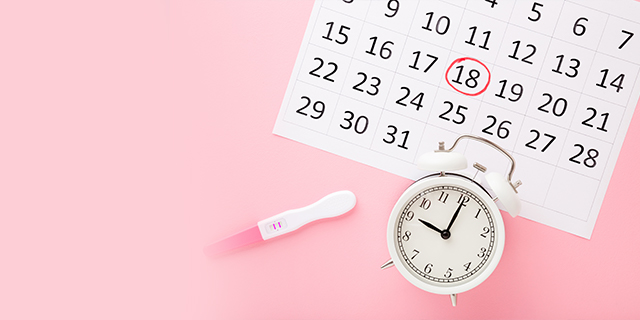The most exciting thing about being pregnant is looking forward to your due date. The particular number and month will be etched into your mind from the time you first find out you are pregnant.
There really is no end to the significance around your baby’s due date. You’ll find yourself making plans around it:
Taking maternity leave at work
Completing renovations
Moving house
Moving your toddler out of the cot and into a bed
You’ll also find that many people - sometime even complete strangers - will be asking when your baby is due. It may even get to the point where you will consider placing a sign on your belly!
Remember, your due date’s not just important for knowing when to expect your baby to be born, it can also be used as a reference point for your baby’s development. You’ll find that there will be date markers and indicators throughout your pregnancy which will help to reassure you and your midwife or obstetrician through your baby’s growing process.
For example, a baby’s first movements can be felt by the mother from around 16 weeks of gestation. By the 20th week of gestation, the womb would have normally grown to the level of the mother’s navel. These and other indicators will all provide reassurance that you and your baby are progressing normally.
Don’t worry, you’re not alone. Your healthcare provider will check with you at each during each visit regarding how far along you are and when you are due. Matching this information with your tummy size provides an excellent way of ensuring your baby is growing and will be ready for birth at, or around, their due date.
The due date is not exact
It’s important to remember that your due date is not always a guarantee. At best, it’s an estimate based on the average length of pregnancy for the average woman who has an average cycle. But who wants to be average?
Due dates are also worked out on the assumption that conception occurred sometime around the 14th day of a woman’s cycle. For the average mother this is likely to occur, but again there has to be some accommodation for the many millions of mothers who don’t fit into this thin spectrum of “average."
How is the due date worked out?
To estimate a due date, simply add 40 weeks or 280 to the first day of your last menstrual period. The majority of babies will come either a few days before or after this date. For first-time mothers, it is very normal to go past their due date.
Just to make things a little more confusing, babies who decide to stay in the womb for 38- 42 weeks are still considered ‘term’ or ‘mature.’ This four week window allows for the differences in menstrual cycles between women who do not have the average 28 day cycle.
Some women are unsettled by the vagueness of the due date and would prefer an exact date to work around and towards. However, babies have a mind of their own and those who are ready to be born have their own mechanisms for initiating labour.
Remember, pregnancy is not an exact science or process and the need to adopt a relaxed attitude about is important. This gives a mother good practice for their upcoming life with a newborn, where needing to be adaptable is an essential part of getting through each day.
Unfortunately, control and babies are two words that can’t be used in the same sentence.
Ultrasounds
It’s routine for most pregnant women to have at least one ultrasound during their pregnancy. The first one is often done in the first trimester, especially if there is some doubt about the due date or gestation period. The second is referred to as a pregnancy screening ultrasound and is done at around 18 weeks of gestation.
An early screening and date confirmation ultrasound can answer lots of questions about the baby’s maturity:
Where the placenta is positioned
The baby’s general health
The rate of the baby’s growth
Whether its size matches the weeks of gestation
What if I’ve had in vitro fertilisation?
If you have conceived via IVF or In Vitro Fertilisation (sometimes called fertility treatment), then it’s much easier to estimate exactly when conception occurred, though this won’t take into account your baby’s individual rate of maturity. In cases of multiple pregnancy, the likelihood of delivering before the due date is greater. Likewise if there are pregnancy complications, then premature labour is more likely.
But what if my baby is born before my due date?
A caesarean section delivery may be recommended for women who have been diagnosed with:
Preeclampsia
Gestational diabetes
An auto-immune disorder
In these cases, a benefit vs. risk assessment is done to ensure that the well-being of the mother is not compromised by extending the length of her labour. It is also important to take into consideration the health risks to the baby of being born pre-term.
When a baby is not growing as it should be or is being compromised in some way, then delivery before the due date is often recommended. However, conditions for the baby outside the womb need to be better than for them to remain where they are. In this way, using the due date as a guide to inform decision-making is a vital part of overall obstetric management.
























